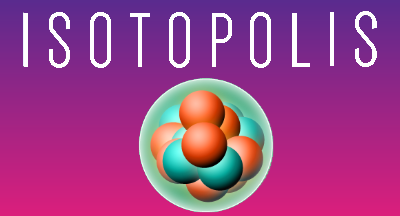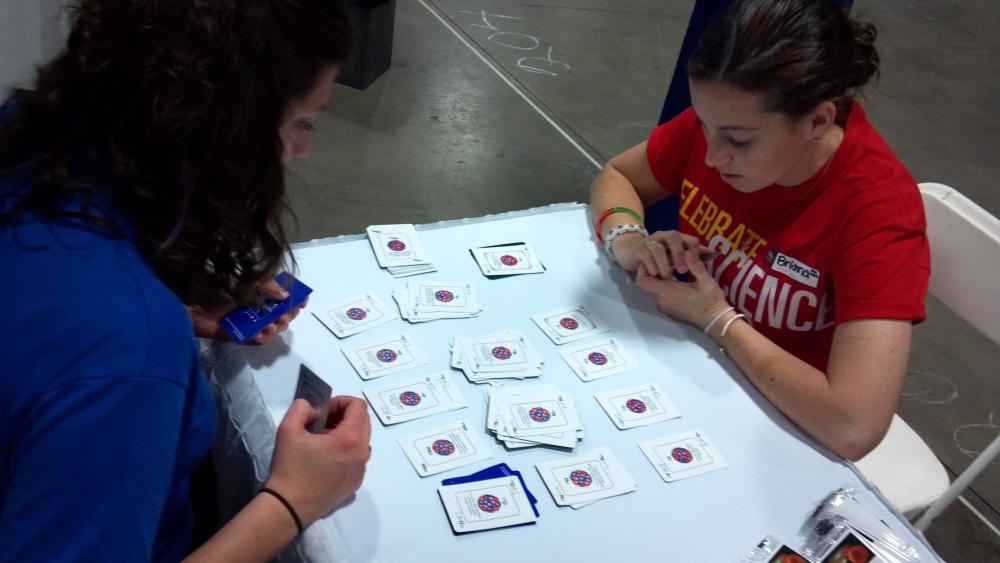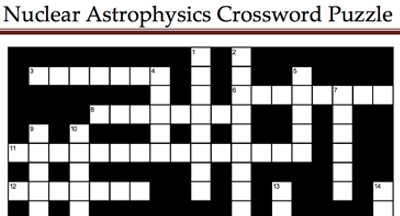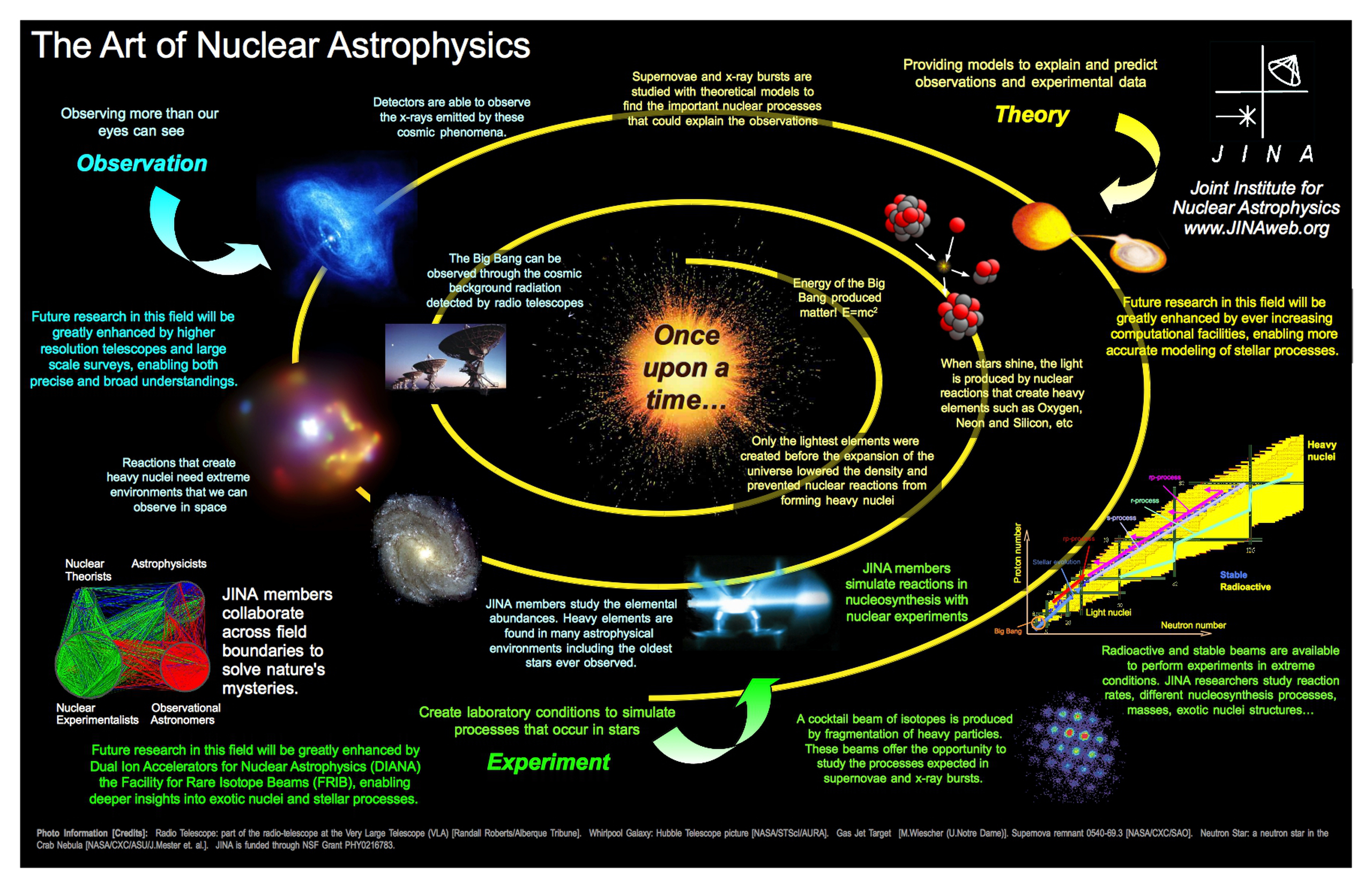Data
You will be redirected to cenamweb.org in 15 second(s). The JINA-CEE website is not updated anymore. The archived website can still be reached through the CeNAM website.

Isotopolis
Accelerate, steer, and collide particles to make new and rare isotopes in this game from the National Superconducting Cyclotron Laboratory and the Games for Entertainment & Learning Lab at Michigan State University.
Players will guide particles through the process of creating new isotopes as they learn about the fragmentation process and the table of nuclides. Developed by scientists and students at Michigan State University; Isotopolis seeks to teach players about the world of particle physics through play.

CNO Card Game
Playing like speed solitaire, JINA's CNO Cycle Card Game is a fun way to teach and learn the CNO Cycle!

Nuclear Crossword Puzzle
Test your knowledge of Nuclear Astrophysics. Can you match all 26 definitions with the correct terms and fill in the blanks?
Online Self-Guided Lessons
Note: You will need Adobe Flash Player to view the following movies.
Click here to check if Flash Player is installed on your computer.

An Introduction to Nuclear Astrophysics (Nuclear Science)
Have you ever wondered what powers our sun and stars have? Have you ever been interested in learning about the origins of the solar system? In this presentation we discuss how atoms, nuclei and other particles help create the world in which we live.

An Introduction to Nuclear Astrophysics (Astronomy)
Take a tour through topics in astronomy! Stars, with their high temperature and density, are ready-made laboratories that would not be available from ground base experiments.

An Introduction to Nuclear Astrophysics (Astrophysics)
Tour some of the fundamental concepts in nuclear astrophysics, including why the sun shines, where energy from the sun comes from, and how it keeps illuminating the Earth for millions of years.

Nucleosynthesis in the Big Bang
View animations and play interactive games to find out how elements were produced during the first three minutes of the universe! Quizzes at the end are provided.

Nucleosynthesis in the Sun
Animations in this movie show how a star is born and how low mass stars, like our sun, produce energy by fusing hydrogen into helium.

Nucleosynthesis in Sirius
Sirius, the brightest star seen in the nighttime sky, shines by fusing hydrogen into helium through the Carbon-Nitrogen-Oxygen (CNO) cycle. Watch to learn more about this process.

Red Giant Nucleosynthesis
Red giants are much brighter and much cooler stars than their mid-sequence star counterparts. Take a look at how these stars are formed and how they generate all their energy.

The Proton-Proton Chain Tutorial
In mid-sized stars like our sun, the proton-proton chain reaction is the most important reaction for producing energy. Watch each step of the process to see how hydrogen converts to helium.

The CNO Cycle Tutorial
Stars with lower energies fuse hydrogen to helium through the CNO cycle. Watch each step of the process to see how hydrogen converts to helium.

The Triple-Alpha Process Tutorial
Stars with higher energies can fuse helium into carbon nuclei. The nucleus of a helium atom us called an "alpha particle." Watch the steps of the triple-alpha chain to learn more about this process.

